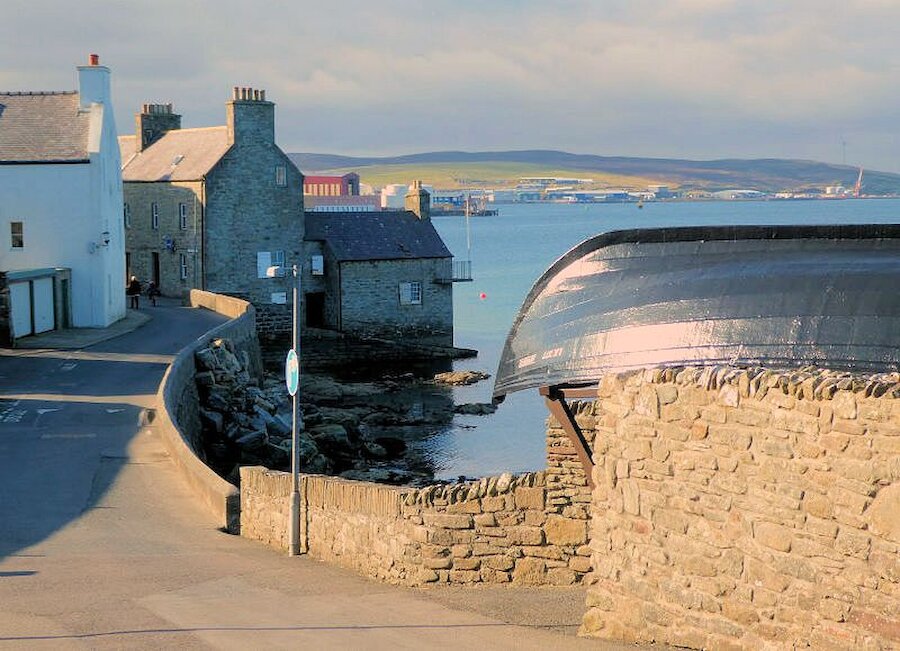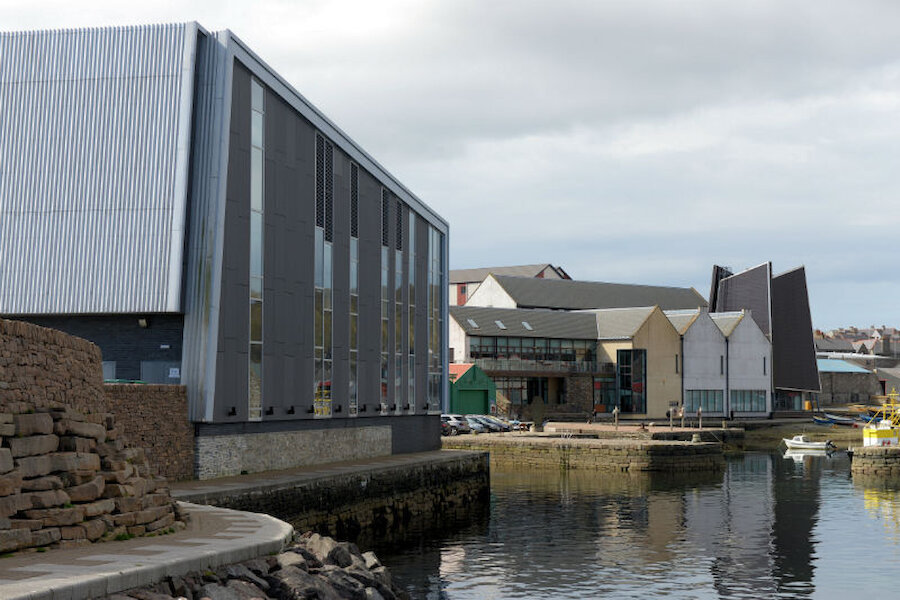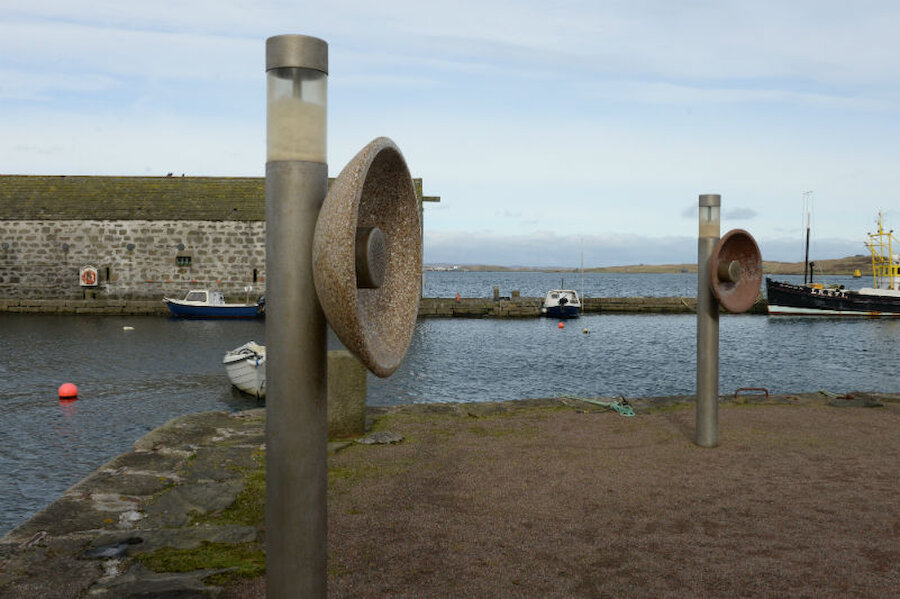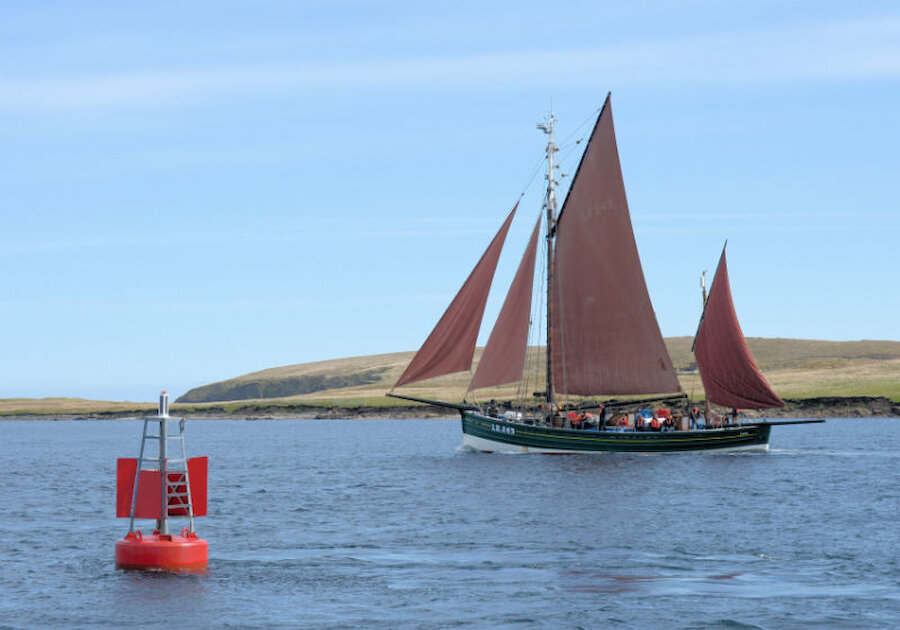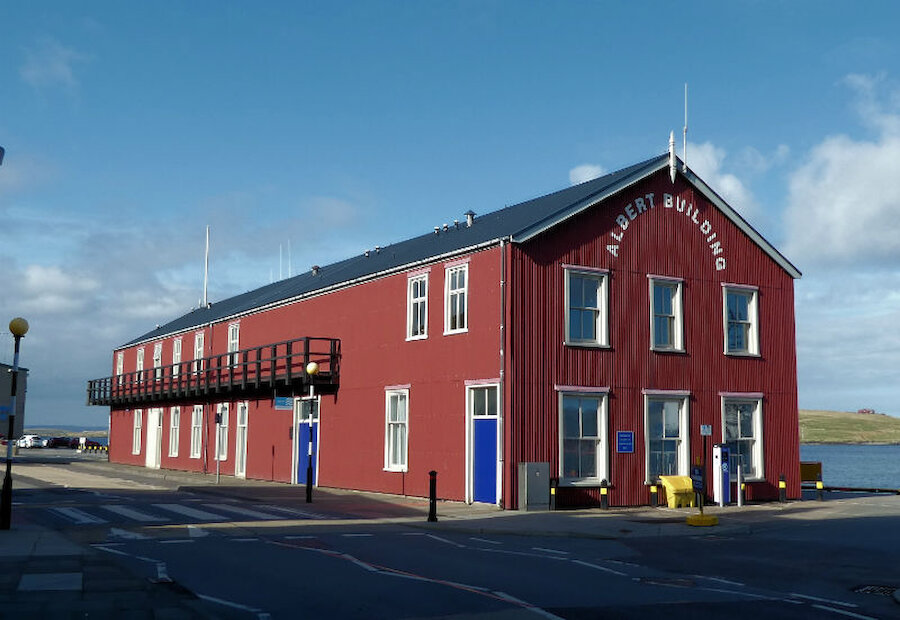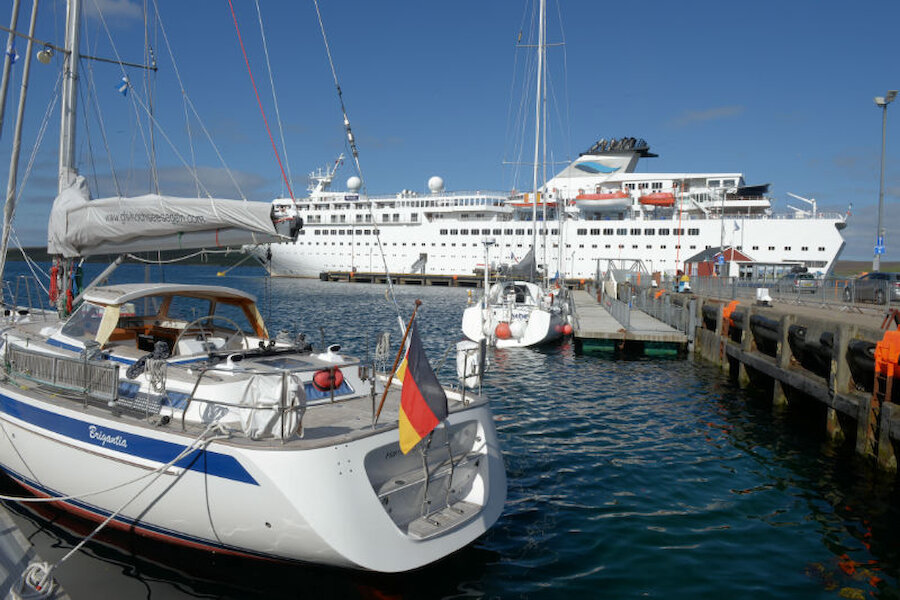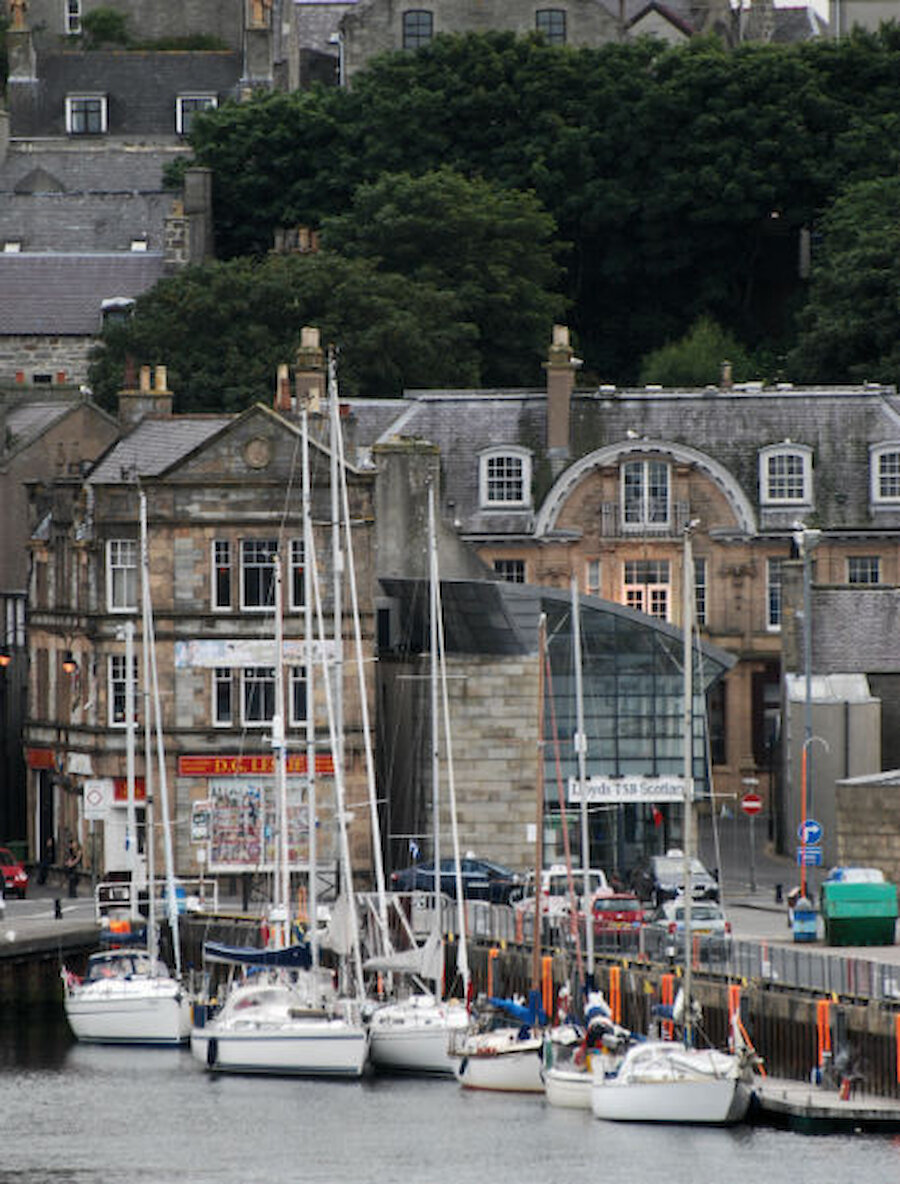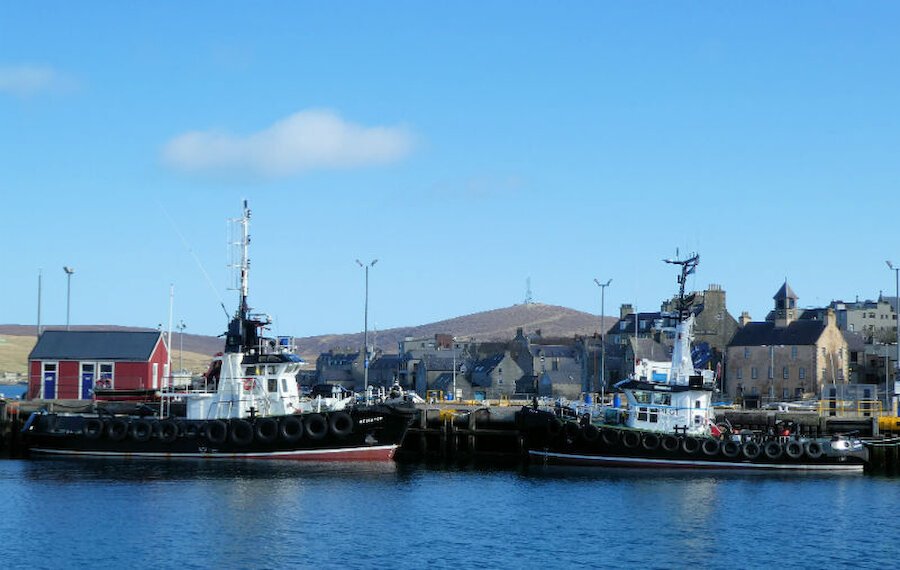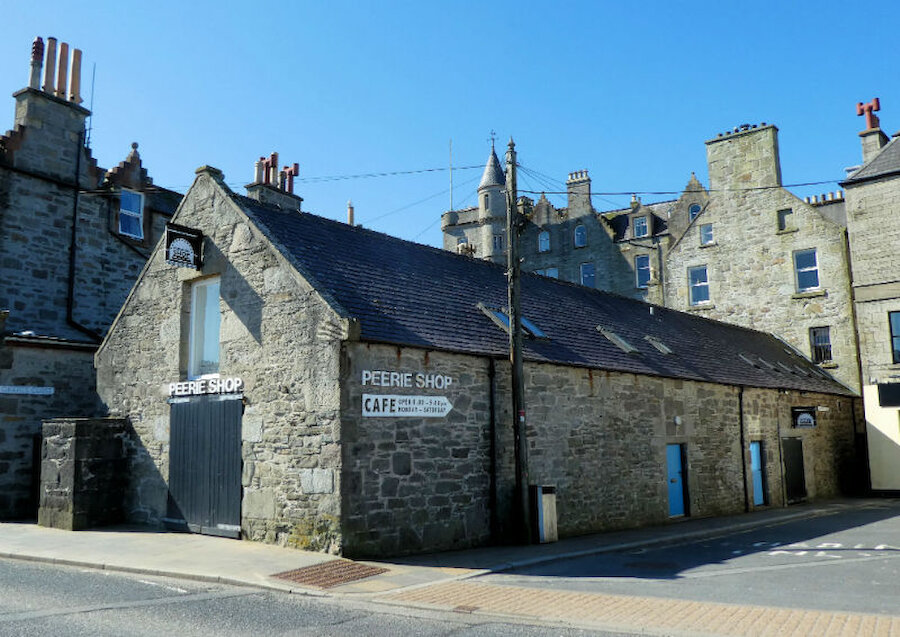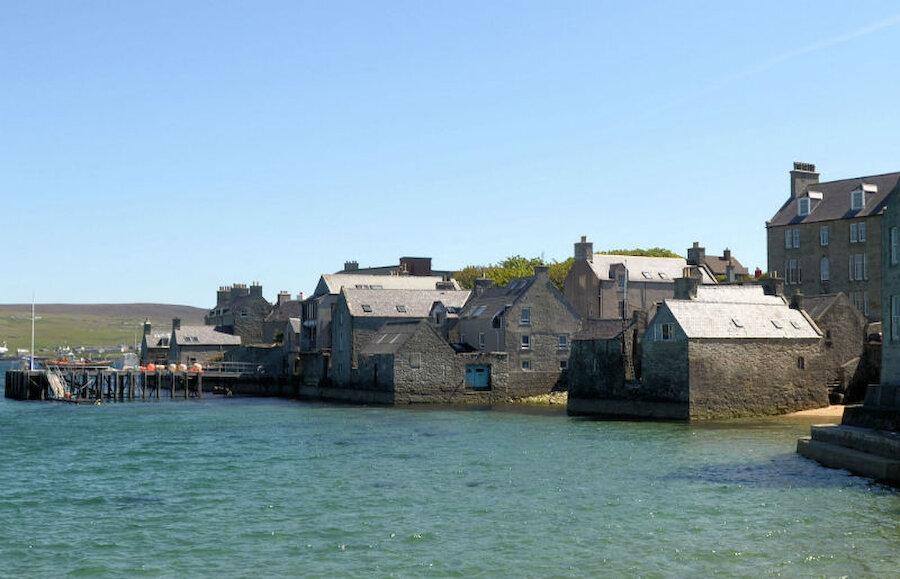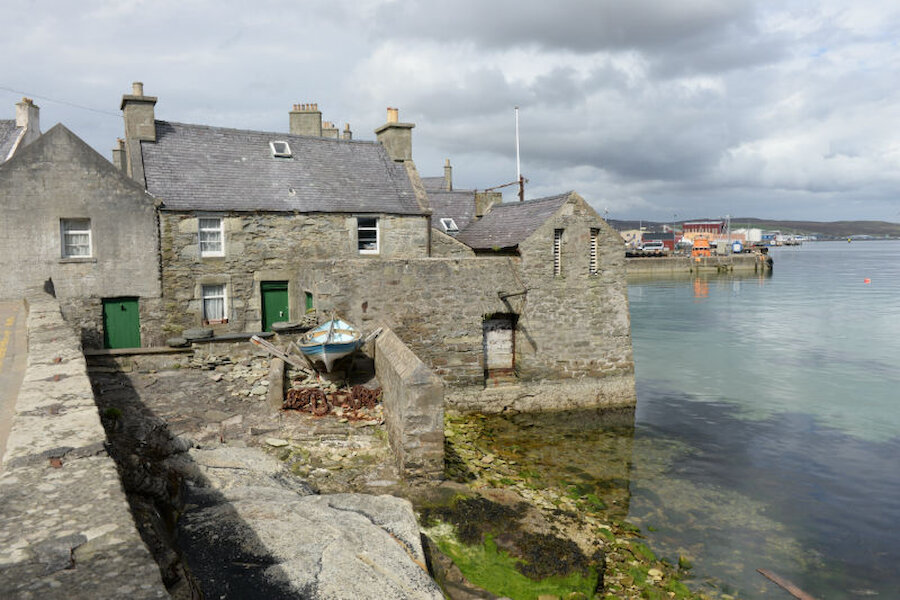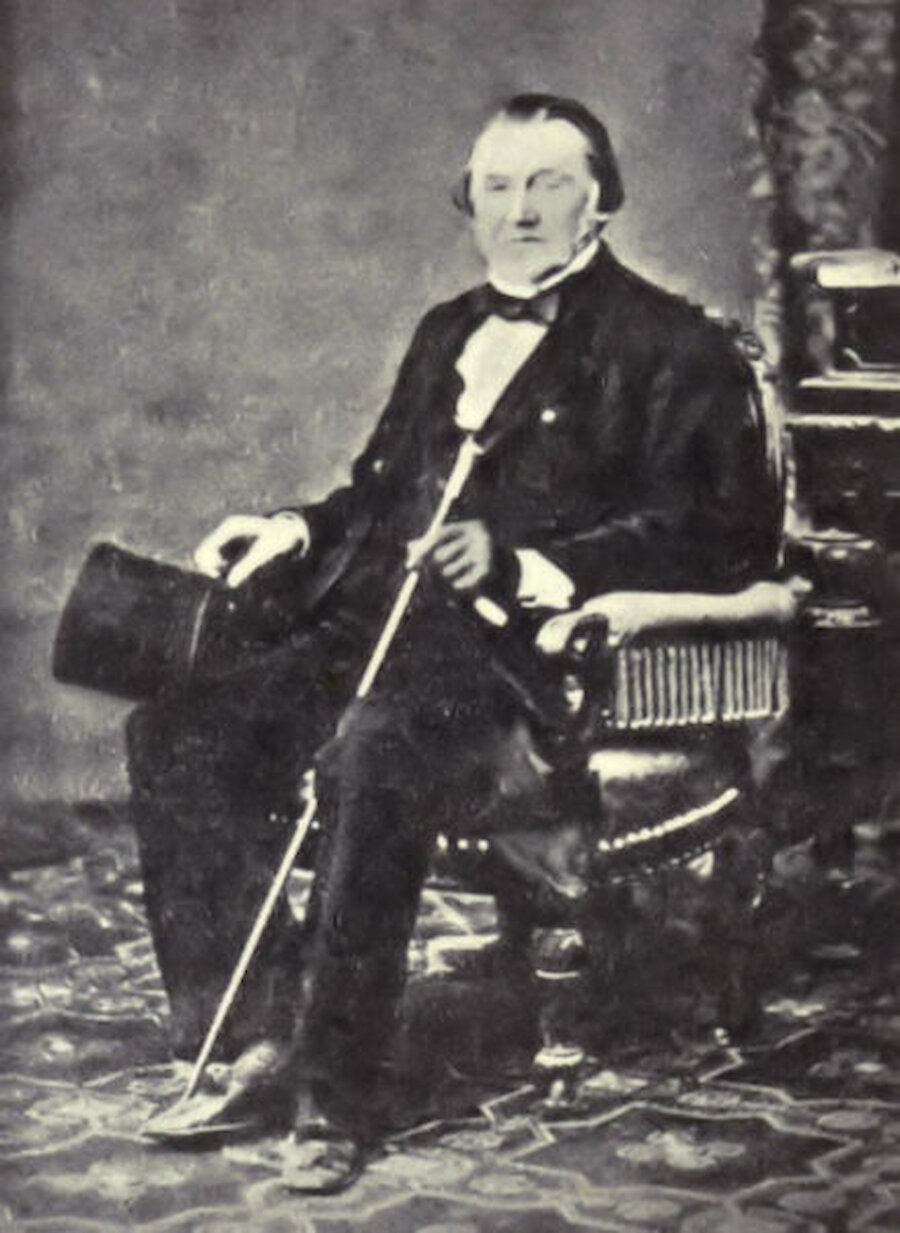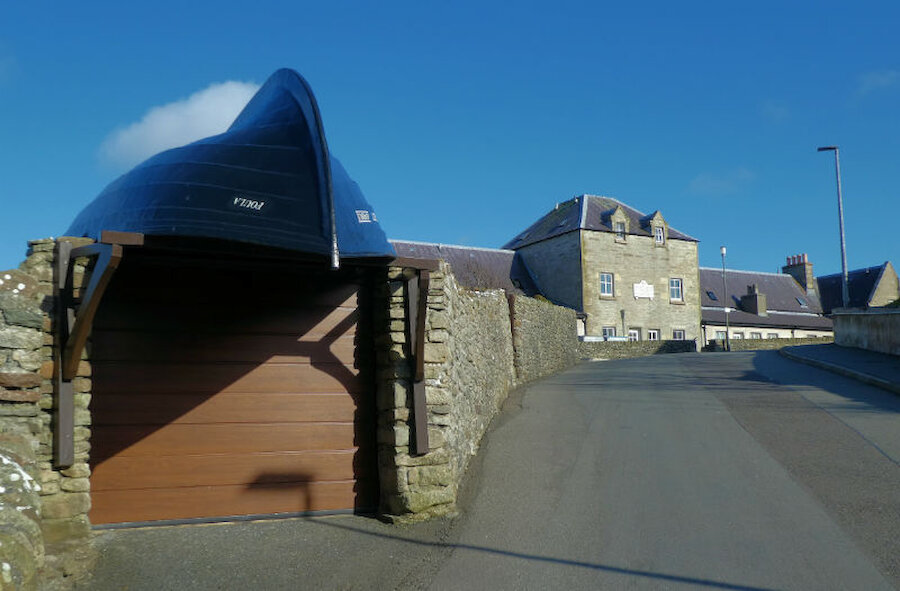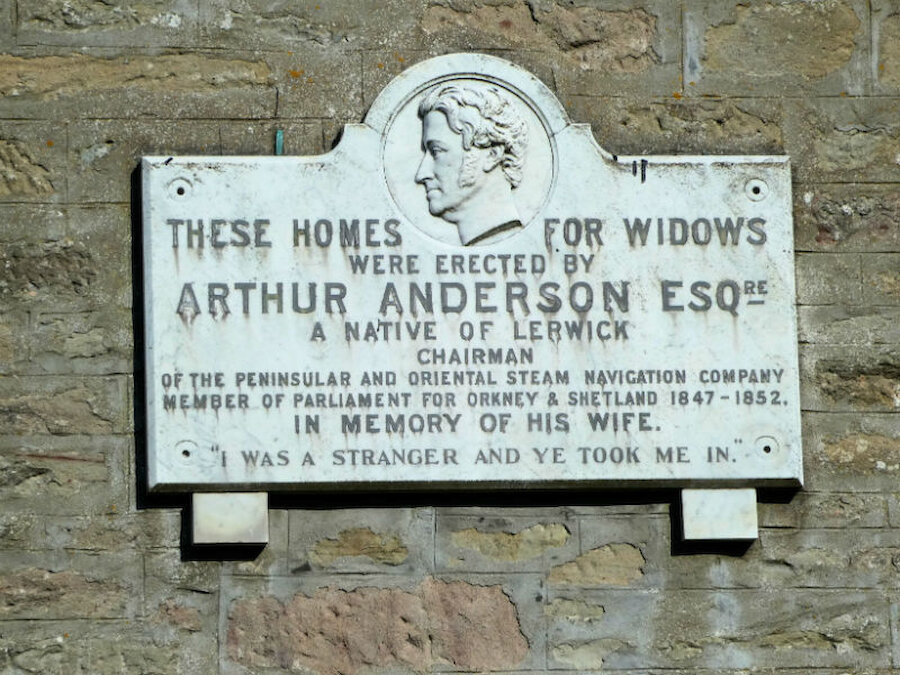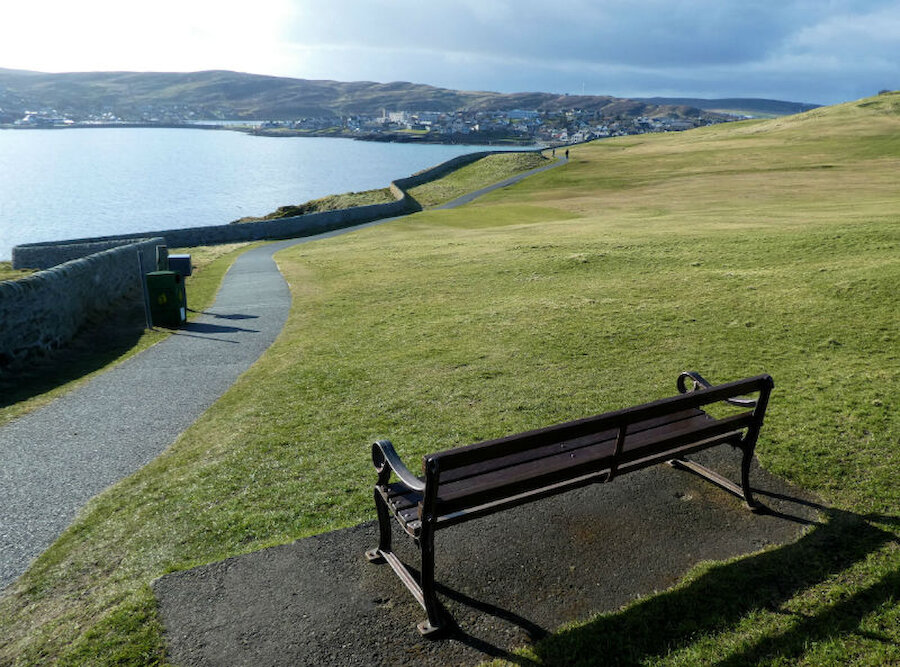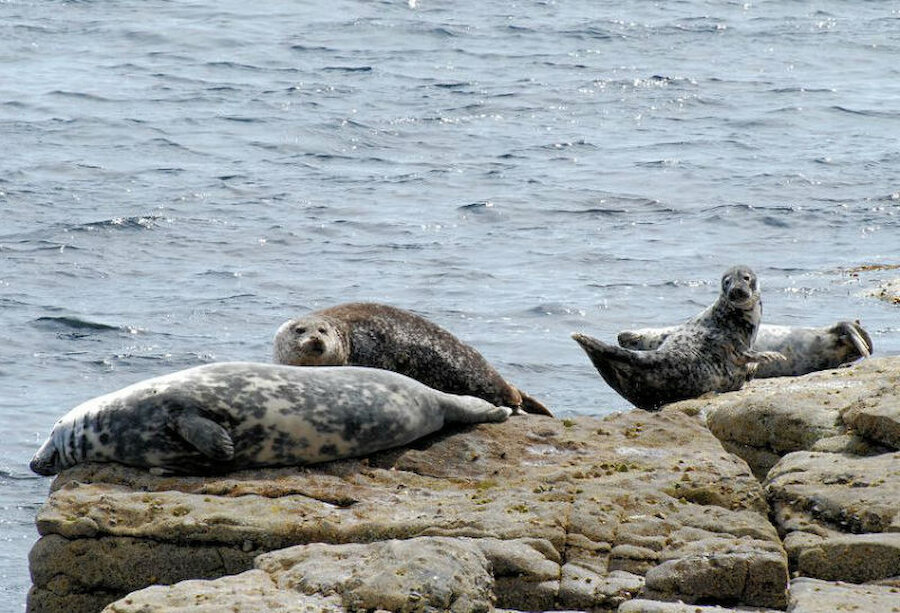It's downhill from the viewpoint here, past the golf course and then above a rocky shore that’s often an excellent place to encounter seals, which sun themselves just fifty yards or so from the Tesco supermarket and even closer to Fjara, an excellent shoreside café restaurant.
From here, there are several more walking options. If we want to return to our starting point, we can continue past the Broch of Clickimin and then along the north shore of the loch, passing the new Anderson High School and rejoining the waterfront in the Garthspool area en route to Hay's Dock.
Another possibility is to head back through the so-called 'New Town' of Lerwick, which dates from the late 19th century and features many fine stone villas, the very attractive flower gardens and the Lerwick Town Hall, which contains some of the finest secular stained glass in Britain.
However, if an even longer walk is what's wanted, it's possible to head south along the winding Sea Road and on to the Ness of Sound, a grassy peninsula from which there are great views in all directions. There's a description of that route here.
And these aren't the only the options Lerwick offers. The Lanes area, above Commercial Street, is worth exploring; in winter, it's sheltered and in summer, when fuschia and flowering currant spill over the stone walls, it's a treat for the senses. Fort Charlotte offers a helping of military history and excellent views.
Another popular outing is the climb from Clickimin, over the Staney Hill and back via the old North Road. Nor, in that direction, should we exclude further exploration north of the town centre, where - among the industry - there's the Böd of Gremista, that other link with Arthur Anderson. Nearby, there's quite often a chance to see some of the best-fed seals in Shetland; they hang around to benefit from generous fishy treats provided by boats landing catches at the fish factory.
So, there's more to walking in Shetland than those wonderful cliffs and moors!

